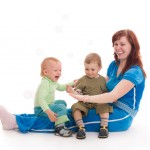
The authors of this review were interested in empirical evidence for presumptions that children with disabilities are at increased risk for child maltreatment, and that parents with disabilities may be more likely to perpetrate child abuse and neglect.
From the findings of the review, the authors conclude that the evidence for any relationship between child maltreatment, victimisation of children with disabilities and perpetration by caregivers with disabilities remains ‘equivocal’. They point out that one reason for this may be the wide variability in research samples, problems with key definitions and poor study methodology. They make suggestions for future research, suggesting the need for more rigorous methodology and the use of a clearer theoretical framework.
One such framework could be the ecological model of child maltreatment which is a comprehensive public health approach looking to address not only an individual’s risk factors, but also the norms, beliefs, and social and economic systems that create the conditions for child maltreatment to occur. The model identifies four levels of influences,
- the individual level such as biological and personal history factors,
- the interpersonal relationship level where issues of relations with peers, intimate partners, and family members may increase risk,
- the community level in which the relationships with schools, workplaces, and neighbourhoods may add risk factors
- the societal level, where the influences are larger, macro-level factors influencing child maltreatment such as religious or cultural belief systems, societal norms, and the potentially deleterious effects of economic or social policies.
The authors suggest that the use of such a framework for analysis and intervention could improve outcomes and point out that a better knowledge and understanding of links between disability and child abuse and neglect is vital in ensuring good service planning and targeted prevention and intervention strategies.
Does childhood disability increase risk for child abuse and neglect?, Leeb, R et al, in Journal of Mental Health Research in Intellectual Disabilities, 5, 1, 4-31
